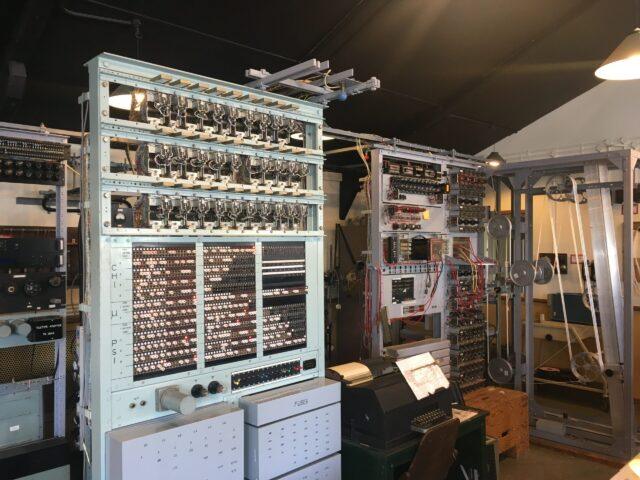5 min read
The power of AI across industries (part 1 of 3)
In the last 24 months, we have witnessed unprecedented technological change, surpassing even the early days of the PC, the internet’s inception, and the rise of the Cloud. AI, although existing since the 50s, has recently evolved uniquely.
In the past 70 years, AI has evolved into a mainstream technology utilised by billions globally. Yet, it was not commonly discussed over family dinners, in local pubs, or among friends and colleagues. ChatGPT popularised AI through chat, enabling daily conversational interaction with computers or mobile phones in a manner that Apple’s Siri never quite achieved.
Traditional AI
The first wave of AI, which I now often refer to as Traditional AI, included the techniques of Machine or Deep Learning and other forms of AI which typically are very mathematical in nature (not that Generative AI isn’t), probabilistic or statistical models and forecasting. Evident in real-world applications such as recommendation engines on your TV, shopping browser experience, next likely action predictions such as chat interfaces or word and sentence completion.
There are others but the point is traditional AI is typically very narrow and requires a lot of specialist knowledge to implement and unlock value. Especially in complex business scenarios where access to data is difficult and likely average quality at best but will require extensive improvement and integration to get the best from the AI model output.
Traditional AI is used in many sectors, including:
- Media and telecoms:
- Recommendations
- Protecting misuse
- Content development assistance
- Manufacturing:
- Fault prevention and proactive remediation
- Avoidance or planning downtime
- Enhancing logistical plans
- Retail and hospitality:
- Intelligent selection of ordering and logistics
- Customer recommendations
- Increased upsell through product suggestions at close
- Energy and utilities:
- Intelligent balancing and usage of systems
- Predictive maintenance
- Use of satellite and drone imagery comparisons to detect leakage
Whilst Traditional AI is used already in regulated markets (such as pharma, central government, local government, insurance, capital markets and retail banking) and continues to provide value and continued enhancements, I believe there is a huge potential to elevate the experiences and productivity of these organisations with the new wave of AI technologies.
The second era of AI is generative
I believe we’re now firmly in the second AI era, AI 2.0 if you will. Early 2.0 as the technology rapidly evolves and the extent of power and data being used by these models grows daily. This second era of AI (incorporating Conversational and Generative AI amongst other technologies) targets a raft of new use cases that are aiming for more human-like processes and activities that require the use of (or even perceived understanding of) language and human interpretation.
This second era will be the new cross-cutting platform that the biggest, most successful, fastest-growing companies will leverage at their core, for the next decade or longer.
It’s also the platform that will shift societal expectations more than we’ve seen in the past, certainly building on, and creating new experiences faster than today’s social web channels we’re used to currently.
Imagine being able to request personalised music, images, videos, or TV shows tailored uniquely to your preferences. Why rely on traditional content creators when you can enjoy dynamically generated content that matches your interests? This shift towards personalised content creation not only enhances your entertainment experience but also deepens your understanding of your preferences, thanks to innovative generative technology.
The point is, that this era is different; expectations have shifted, and with AI, business processes, customer experiences, citizens’ experiences, business or governmental workflows or entire business models can be digitalised or automated, resulting in cost, time and resource savings.
Quick wins across industries leveraging generative AI
While broader considerations and complexities exist, including cost predictability, performance levels, response speed, quality and depth of insight, data privacy and control, secure integration, and the reliability and resilience required for high-quality production solutions, it’s beneficial to first examine the straightforward capabilities of Generative AI and its potential offerings to organisations and departments:
- AI-assisted development: Implementing AI in the development process can lead to significant productivity improvements, often resulting in double-digit gains. However, it’s important to factor in the necessary training, the risks associated with data security, and the actual location of the data storage. Additionally, be cautious of vendor claims; the productivity boosts promised by these tools may not always match real-world results. The new game in town here is looking at the breadth of the software development lifecycle and the productivity and well-being of the developer. Other considerations such as backlog maturity and length, quality of code, testing and security, and sustainability of the solution are but a few that will all come together to enhance your feature release cadence and quality of code. Products such as GitHub Co-Pilot, GitLab Duo, TabNine and AWS CodeWhisperer are all common here.
- Search and retrieval engines along with Co-Pilot or virtual assistant agents are the two most common starting points for most organisations focused typically on internal use cases such as legal or complex documentation searches, searching large documents or repositories not easily or quickly accessible. They are also used to help productivity in the production of content or first-pass text or spawning ideation and creativity in visuals as well as language-based output.
- The use of translation and multi-lingual but also stylistic language ability is a less obvious but truly powerful benefit applicable to many aspects as well as a cost saver and value creation lever for many. Being able to expand the ability to reach a global customer base built from a single managed platform, with cultural norms, language and style, is exciting for banks and insurers alike. The international translation ability of Generative AI is now close to that of humans, this also opens cost savings for translation services, but most importantly speed which can be seen as a differentiator in areas like investment and corporate banking to deal with international due diligence for example. We have built some amazing solutions such as the work at Bletchley Park given the historic nature of this location and Alan Turing.
Conclusion
The transformative power of AI across industries is exciting. Its impact is most notable in regulated industries like Financial Services, and the potential for Government departments is equally thrilling. According to the McKinsey Economic Potential of Generative AI report, the most impacted sectors are high tech, banking, pharmaceuticals, education, telco, healthcare, and insurance, with the report excluding the impact of government spending.
As we delve deeper, it’s clear that we’re only scratching the surface of its potential. The second era of AI is already revolutionising how we interact with technology and how businesses operate and serve their customers.



